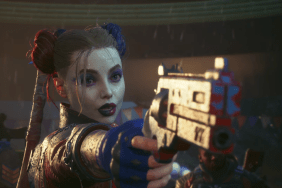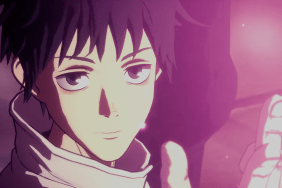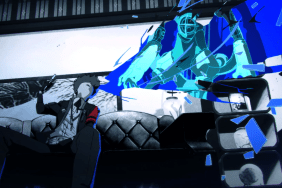The Making of Karateka is Digital Eclipse‘s first title in its Gold Master Series, a line of interactive video game documentaries. Much of the format is similar to the studio’s Atari 50: The Anniversary Celebration title released last year. While that game was a broad overview of a publisher’s legacy, The Making of Karateka goes deeper into a more singular focus. This results in a one-of-a-kind interactive documentary just as innovative as the game it’s covering.
Released in 1984 for the Apple II computer, Karateka was a landmark release. 20-year-old designer Jordan Mechner took inspiration from Akira Kurosawa movies and Disney animation for one of the most cinematic games of the era. Sure, the fighting is a bit simplistic for today’s standards, and the plot is rather thin (you’re saving a princess). Still, it’s a remarkable game given the time period — one that changed gaming forever.
As the documentary portion reveals, Karateka was not Mechner’s first attempt at a game. He had previously tried to create an Asteroids clone eventually dubbed Deathbounce. Learning of Mechner’s early failures is fascinating. We get to see every surviving document, from publisher feedback to excerpts from his college journal. It’s a fascinating piece of history, one that shows rejection forced him to innovate rather than chase the arcade trends of others.
The Making of Karateka features an interactive timeline, which allows players to watch video interviews and featurettes, view historical documents, and even play prototype and full versions of the games mentioned.
The real star of the video portions winds up being Mechner’s father, Francis, a research psychologist and concert pianist who composed the soundtrack for Karateka and Prince of Persia. It’s a famous fact that Mechner rotoscoped footage of his younger brother in 1989’s Prince of Persia. But the documentary really reveals what a full family effort Karateka was and how much support and understanding Mechner received from his parents. It shows that genius talent still often needs to be fostered and supported to unlock its full potential.

The documentary does a great job of showcasing how rapidly early PC gaming advanced during the time period. Mechner, a student at Yale at the time, was anxious about whether he’d be able to release Karateka in time for it to have the impact he hoped. With so much innovation, something that looked promising could be outdated rather quickly. Thankfully, Karateka was able to find the audience it deserved and allowed Mechner to go on to create his magnum opus a few years later in Prince of Persia — which also deserves to get the Gold Master Series treatment down the line.
Three versions of Karateka are included — the original Apple II release, plus the Commodore 64 and Atari 8-Bit ports. All are fascinating time capsules that are still enjoyable to play today, and Mechner even provides commentary with his father in a playthrough of the Apple release. Even more interesting are the prototypes, as you can see it was iterated upon, and how publisher Brøderbund helped polish it into the classic it is regarded to be today.
However, the coolest addition to this collection is “Karateka Remastered,” a reimagined version of the original game that incorporates ideas Mechner scrapped due to time constraints and technical limitations. It’s a much more modern version of the game — you can even give yourself extra lives to make it less brutal — and even incorporates an axed leopard boss fight that proves to be an interesting puzzle. It’s a great way to showcase how ahead of the curve Mechner was with his design, as the A.I. still proves challenging and rewarding to beat nearly 40 years later. Unfortunately, there are occasional bugs in the remastered release (including one that forced me to restart after an enemy disappeared off-screen), but it’s a minor issue that doesn’t dampen what is a really cool extra.
What’s most special about The Making of Karateka is that everything is put in its proper context. Simply playing the ports or even the original game isn’t nearly as impressive without having the proper historical context of where gaming was at the time. That’s what makes this release so special, as it shows the early years of Mechner’s incredible career in incredible detail and frames it appropriately.
It’s packed with fascinating historical documents, such as fan mail from Doom designer John Romero. I came away so impressed with the level of care. I only wish that the game had a lengthier wrap-up section, as Prince of Persia and the rest of Mechner’s career endeavors are only briefly mentioned. That said — I understand keeping the focus on Karateka first and foremost.

The Making of Karateka Review: The Final Verdict
The Making of Karateka isn’t just a meaningful step forward for game preservation and history. This is proof-positive of what makes video games such a fascinating and thrilling medium. Learning all the work that went into it makes it all the more meaningful. This is especially true when you get to the finished product after multiple prototypes and dozens of design documents.
Add in the fact that Karateka has stood the test of time — and that the remastered version is a blast — and you’ve got the perfect game to kickstart Digital Eclipse’s Gold Master Series.
SCORE: 9.5/10
As ComingSoon’s review policy explains, a score of 9.5 equates to “Excellent.” Entertainment that reaches this level is at the top of its type. The gold standard that every creator aims to reach.
Disclosure: The publisher provided a PlayStation 5 copy for our The Making of Karateka review. Reviewed on version 1.000.000.










